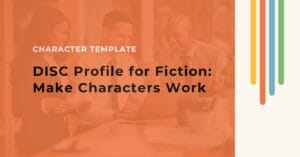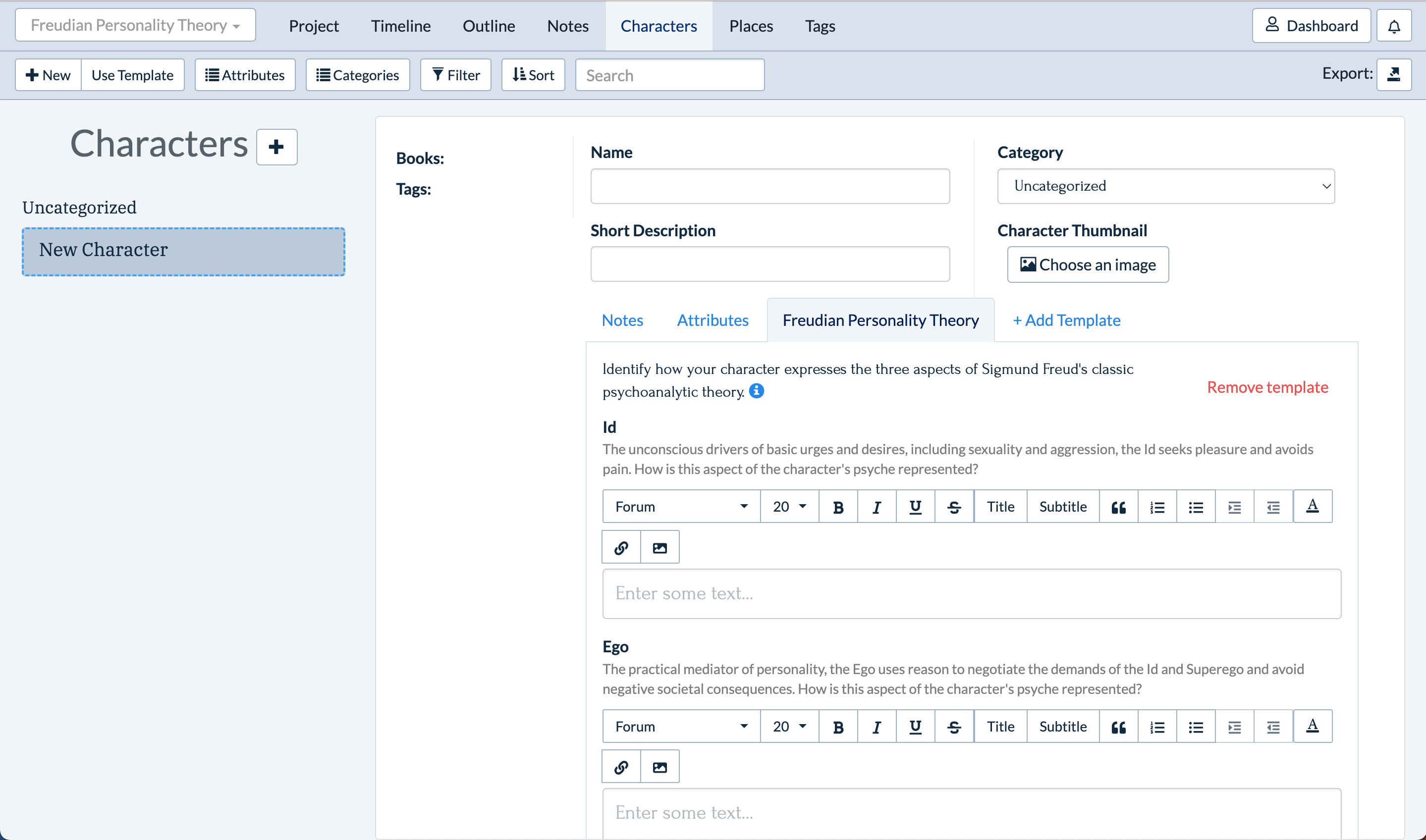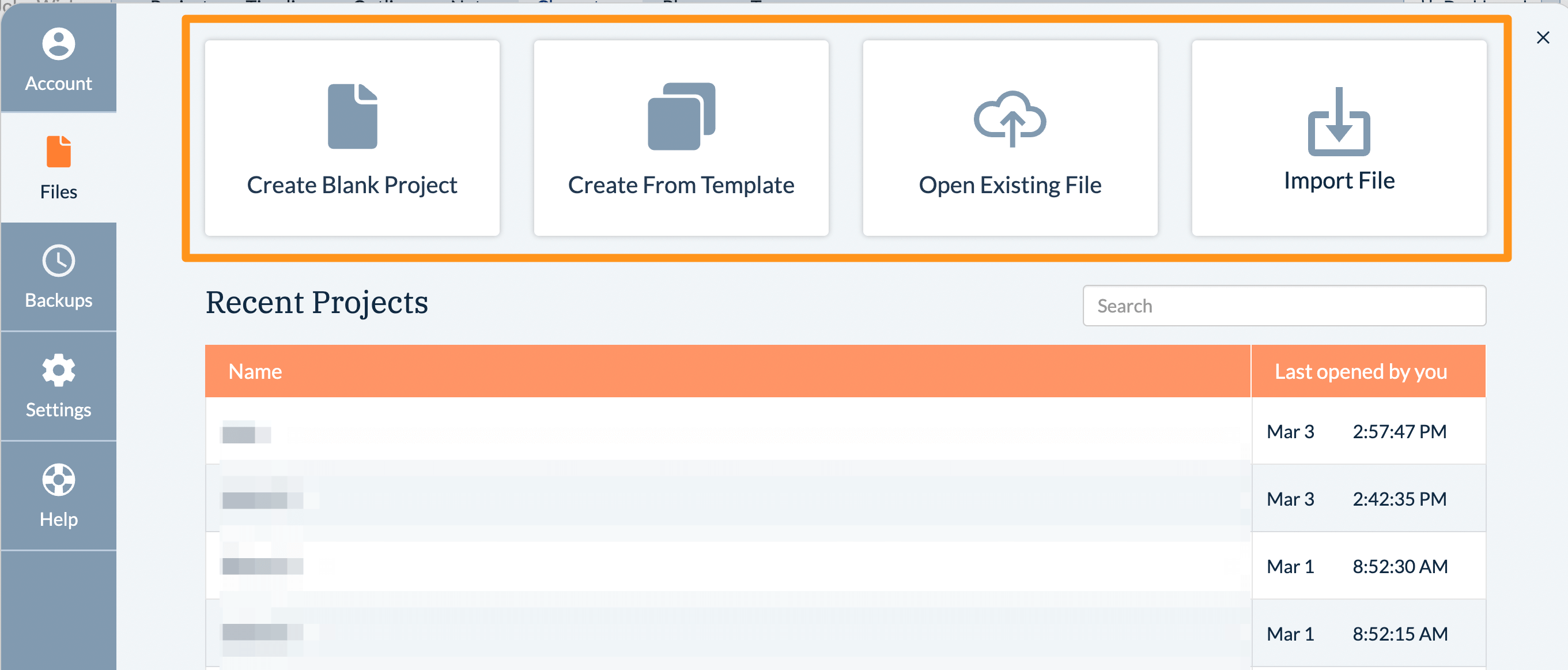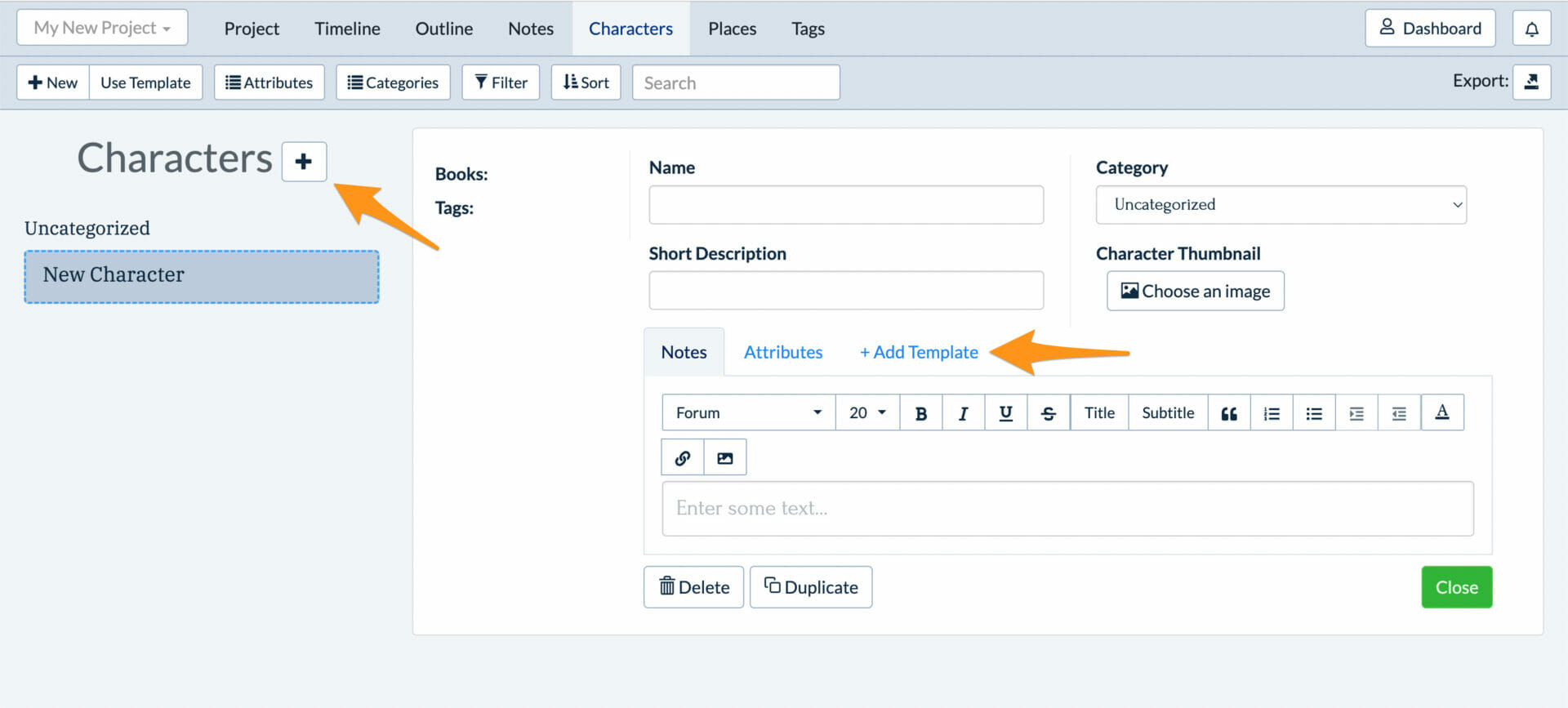
Organize your creativity with the #1 book outlining and story bible software for professional and aspiring writers.
Product
Helpful Links
© Fictional Devices, 2024. All Rights Reserved.
Sometimes developing your characters takes a lot of effort and thinking power. Other times, they emerge practically fully formed. Have you ever watched your character’s own internal forces duke it out for control over the story and wondered how to dig even deeper into their psychology? You might want to think about developing characters with Freudian Personality Theory.
As you’ll learn below, Freudian Personality Theory gives writers some great tools to psychoanalyze characters. Plottr has a template for bringing the concepts to life, so keep reading to learn how it works and how to apply it to your own fiction.
Freudian Personality Theory is based on (you guessed it) the research of Sigmund Freud, who published The Ego and the Id in 1923. Freud’s work shares his model of how the human mind works.
Among other things, Freudian Personality Theory includes three core concepts for writers: the Id, the Ego, and the Superego.
In short, Sigmund Freud viewed the mind like an iceberg, with the hidden unconscious submerged (and having more impact on thought patterns and behaviors than most of us realize).
For writers, his ideas are goldmine of opportunity to craft characters who fail to understand why they do the things they do. We, as their creators, can hint toward the moments in their childhoods or pasts where the roots of their behaviors lie.
Who doesn’t love a character with a neurosis? Some of our favorite heroes and heroines (Bridget Jones from Bridget Jones’s Diary and Adrian Monk from the television show Monk, for example) are characters who come with baggage any psychoanalyst would give their eye teeth to analyze.
Here are a couple ways to use Freudian Personality Theory when developing characters:
Overall, applying Freudian Personality Theory to your writing can provide you with a deeper understanding of your characters’ unspoken backstories — the underlying traumas and attachments that make them tick (especially the ones they’re unaware of). It’s great for creating memorable heroines and flawed heroes who compel your readers with their unique ways of being.
The Freudian Personality Theory character template in Plottr helps you flesh out the inner lives of your characters (though they might not lie on the couch for you while you conduct your writing sessions). It includes the following attributes to consider and fill in:

The Id: The unconscious drivers of basic urges and desires, including sexuality and aggression, the Id seeks pleasure and avoids pain. How is this aspect of the character’s psyche represented?
The Ego: The practical mediator of personality, the Ego uses reason to negotiate the demands of the Id and Superego and avoid negative societal consequences. How is this aspect of the character’s psyche represented?
The Superego: The moral conscience of personality, the Superego aims to control the impulses of the Id; it is the internalized voice and values of society (or family) encouraging perfection and punishing failure. How is this aspect of the character’s psyche represented?
Using the character template in Plottr, let’s example Bridget Jones, the title character from the Bridget Jones’s Diary novel series by Helen Fielding, and see how Freudian theory sheds light on Bridget’s personality and behaviors.

Id: Bridget obsesses about her love life, career, smoking, and alcohol consumption. She also has an ongoing fear of dying alone and being eaten by dogs before her body is discovered. Her entire life is about avoiding pain (but she’s not quite able to seek pleasure either).
Ego: Bridget becomes involved with two men: her handsome boss (Daniel), who two-times her with a younger, sexier woman; and then a former childhood playmate (Mark), who’s more reserved. Her ego hasn’t evolved enough to guide her, via sound use of reason, toward avoiding some of the pain she encounters during her relationship with Daniel or Mark. She misses cues and misinterprets situations regularly.
Superego: Bridget uses her friends as her moral conscience rather than her own underdeveloped superego. Her friends offer her advice and support during her relationships, but by the end of the book, Bridget has strengthened her own superego and is able to hear — and heed — her own conscience.
Find a comfortable chair and let’s start analyzing your characters using the Freudian Personality Theory Character Template in Plottr. First things first: you’ll need to purchase Plottr or sign up for a free trial.
Once you have Plottr set up on your computer, follow these simple steps to add the template to your Freudian characters:



You can give yourself a (fictional, of course) degree in psychoanalysis once you’ve got this character development tool mastered.
With Plottr, you can add multiple templates to each of your characters as you build well-rounded, memorable personalities. If you’d like to give that a try, the Freudian Personality Theory Character Template would work well with these other character templates in Plottr:
Now that you’ve seen how you can apply psychoanalysis to your Freudian characters, it’s time to check out the template in Plottr and get to work. But remember — you don’t need a psychology degree to analyze your characters! Just jump in and get started.
Let us know what you think about this template in the comments or in our Facebook group for writers! We’d love to hear how Plottr helps spark your creativity.


© Fictional Devices, 2024. All Rights Reserved.
Comments